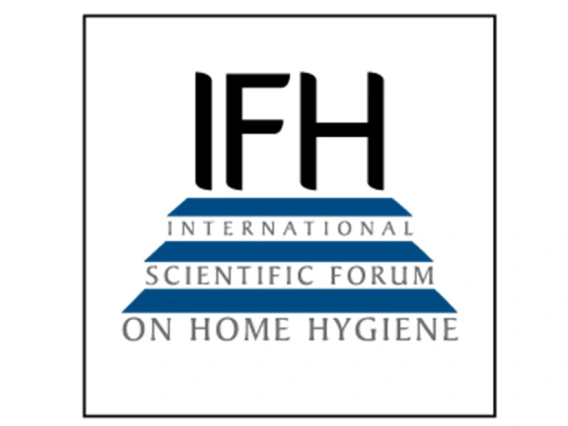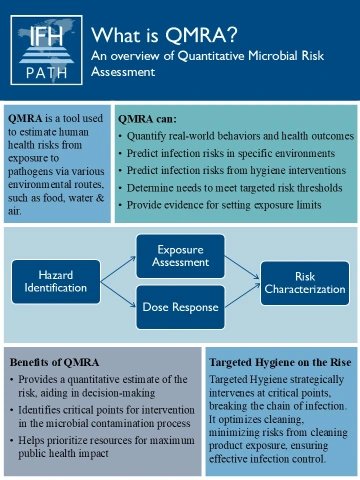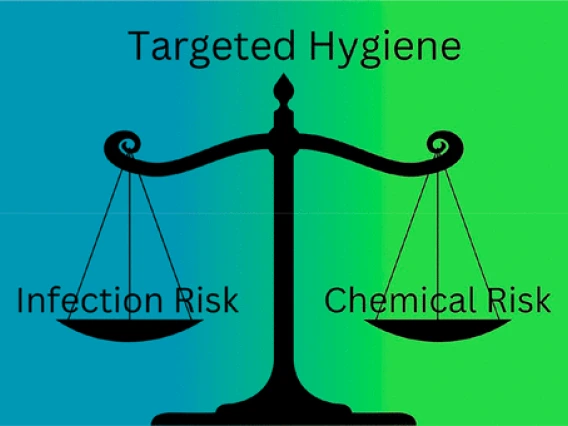An overview of Quantitative Microbial Risk Assessment
Quantitative Microbial Risk Assessment (QMRA) is a powerful tool for evaluating the effectiveness of cleaning and disinfection protocols in relation to estimated disease burden. Traditional methods of assessing pathogen risks on surfaces, like epidemiology, face challenges due to variability in human behavior and pathogen interactions with the environment. QMRA offers a structured approach, consisting of hazard identification, exposure assessment, dose-response, and risk characterization.
- Hazard identification focuses on understanding pathogens and the diseases they cause.
- Exposure assessment quantifies how pathogens interact with the environment and human behavior, resulting in a dose of pathogen ingested, inhaled, or absorbed.
- Dose-response estimates the probability of a health outcome given this dose, informed by various studies.
- Risk characterization combines these elements to quantify the risk of a health outcome for a given scenario.
These quantified risks are then compared to established thresholds to determine if interventions are necessary. For example, the World Health Organization and the U.S. Environmental Protection Agency use a threshold of 1 in 10,000 as an acceptable annual risk of infection from drinking water. QMRA models can also inform how much pathogens need to be reduced to meet a specific risk threshold, allowing for cost-effective interventions.
While QMRA is primarily used by experts in academic and government sectors, there's a growing demand for its application in businesses. Tools are being developed to give users control over exploring different interventions and their anticipated risk reduction benefits. QMRA outputs can also inform economic analyses to balance risks and intervention costs effectively.
Benefits of QMRA
Quantitative Microbial Risk Assessment (QMRA) offers wide-ranging benefits that can be applied across multiple levels, from personal health and hygiene practices to broader community and policy initiatives. By providing data-driven insights into microbial risks and intervention impacts, QMRA ensures resources are used effectively to protect health and prevent disease.
- Informed Personal Practices: QMRA helps individuals make evidence-based decisions about hygiene by identifying high-risk scenarios and recommending effective interventions to reduce pathogen exposure.
- Optimized Institutional Protocols: Organizations can use QMRA to design cost-effective hygiene strategies that manage risks in workplaces, schools, healthcare settings, and other environments.
- Strategic Public Health Campaigns: By identifying critical points of intervention, QMRA supports targeted community initiatives to address specific risk points, enhancing overall health outcomes.
- Evidence-Based Policy Development: QMRA can provide evidence-based guidance for setting exposure limits and designing regulatory policies, ensuring resources are allocated effectively to prevent outbreaks and safeguard public health.
- Streamlined Research Approaches: By leveraging existing data and predictive modeling, QMRA reduces the need for resource-intensive field trials or experiments, optimizing research investments without compromising rigor.
From home hygiene to institutional protocols and community health campaigns, QMRA provides a scalable framework that delivers actionable insights and benefits across multiple sectors.
Leveraging QMRA for Targeted Hygiene Approaches
Targeted Hygiene focuses on identifying and addressing high-risk scenarios or "moments of risk" where interventions are most effective in reducing disease transmission. QMRA plays a crucial role in this approach by systematically analyzing hazards, exposures, dose-response relationships, and overall risks. This process ensures that hygiene efforts are directed precisely where and when they are needed most, maximizing their effectiveness while minimizing unnecessary costs. This approach ensures that hygiene efforts are directed towards scenarios with the highest risk of disease transmission, ultimately leading to safer and healthier environments.
Learn More: IFH Resources

Title: CASE STUDY REPORT: Targeted Hygiene: a risk-based approach to applying policies and hygiene interventions in public settings and large events: a case study of hygiene interventions at COP26 2021
Authors: Lisa M. Ackerley, Adrian C. Paskey, Carolyn Buckley, Stephanie M. Cooper, Katy Slater, James Logan, Stuart Bainbridge









